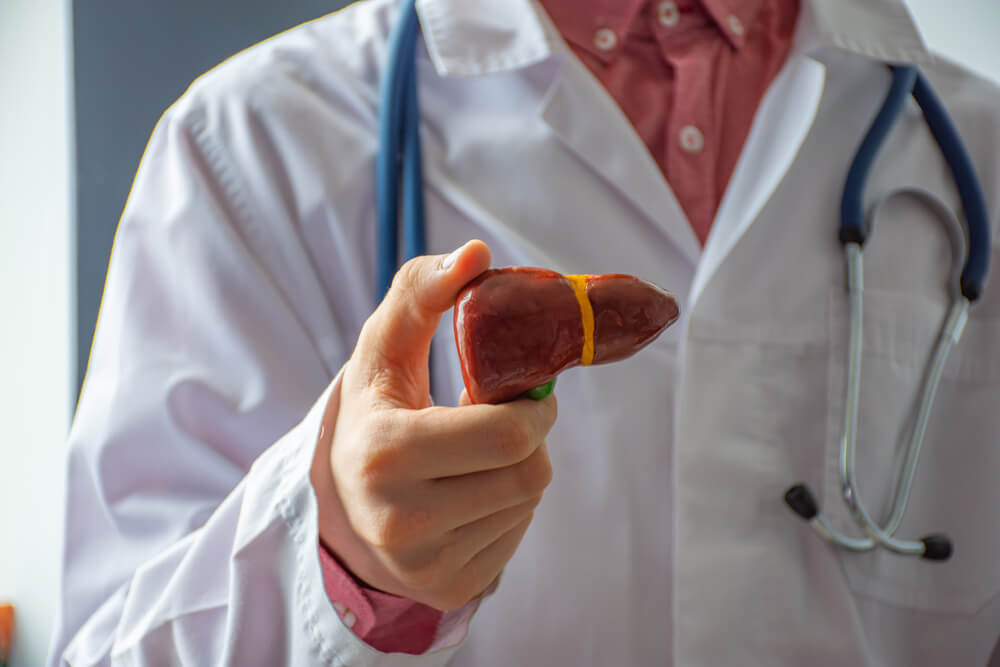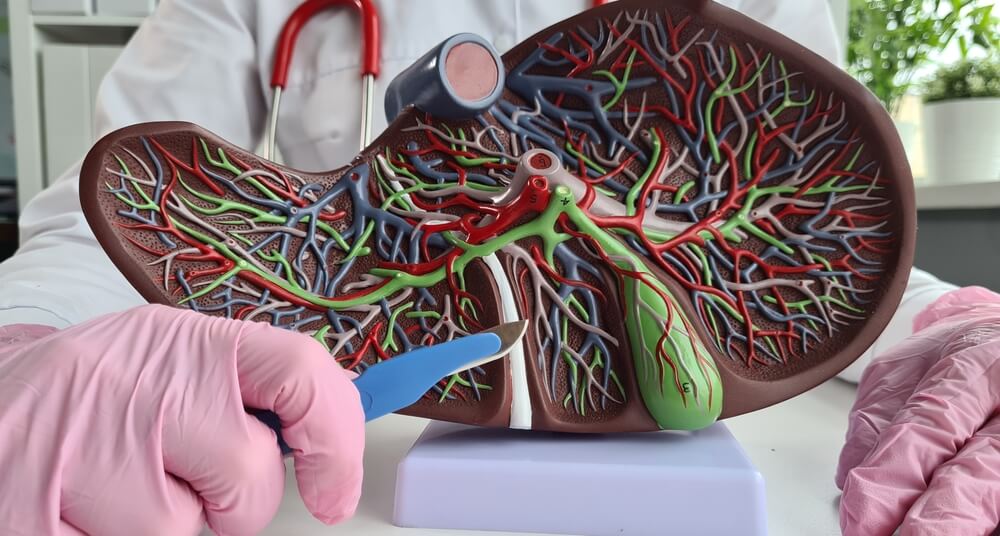What is a Hepatectomy?
A hepatectomy, or liver resection, is a surgical intervention that removes a part of the liver. Typically, people can survive without up to two-thirds of their liver as long as the rest of the organ is in good shape. For patients with liver disease, experts may opt to remove a smaller portion, and if the remainder of the organ is healthy, the liver may grow back to its former size.
Why are hepatectomies performed? What can patients expect during liver resection recovery? Dr. Omar Rashid and his expert team bring you all the answers in this article.
What Is a Hepatectomy and Why is It Performed?

Sometimes, liver resection is the only way to address liver disease. In other cases, people may opt for a hepatectomy if they want to donate a part of their healthy livers for living donor liver transplantation.
Still, experts will mostly perform hepatectomies to remove benign, precancerous, or cancerous liver tumors.
That being said, the most prevalent liver malignancies that are treated by liver resection are the following:
- Metastatic colorectal cancer (secondary liver cancer, i.e., the tumor does not originate from the liver).
- Hepatocellular carcinoma (the malignancy originates from the liver, i.e., it’s primary liver cancer).
- Cholangiocarcinoma (also primary liver cancer).
Benign tumors usually include:
- Liver cysts.
- Adenoma,
- Gallstones.
Liver Resection: How Serious is It?
Liver resection presents a significant surgical challenge due to the intricate network of blood vessels within the liver, which can result in substantial bleeding if not carefully managed. Therefore, liver surgeons require specialized training to ensure the preservation of these vessels and the effective control of bleeding. For smaller liver resections (involving less than half of the liver), the procedure carries reduced risk. It can be performed using minimally invasive surgical techniques such as laparoscopy or robotic surgery. However, the complexity and risk increase significantly for major liver resections (involving more than half of the liver). As a general rule, it is advisable to entrust your liver resection to experienced specialists who are well-versed in managing the intricacies of this operation.
Liver Resection Surgery Details
Healthcare providers must ensure that surgery is the best option to treat the problem before surgery. They need to confirm whether the patient is healthy enough to undergo the procedure, whether the lesion is technically operable, and whether the cancer is present in other parts of the body.
In some instances, experts may opt for chemotherapy, radiation therapy, or interventional radiology before surgery to shrink the size of the tumor, making the operation safer and easier.
During these stages, the medical experts will also determine whether the patient needs a partial hepatetomy or a liver transplant. This will usually depend on the following:
- The size of the tumor.
- The overall health of the liver.
- How functional will the liver be after surgery.
- Whether the patient meets the criteria for a transplant.
Performing Liver Resection Surgery
Hepatectomy can be conducted through various surgical approaches, including open, laparoscopic, or robotic surgery. Your surgeon typically determines the choice of method based on the specifics of your condition. Laparoscopic and robotic procedures are considered less invasive as they involve making smaller incisions, typically about four to six small incisions, each approximately half an inch in size. This minimally invasive approach often leads to a smoother and faster recovery process. However, in cases requiring more extensive or complex liver resections, traditional open surgery may be the preferred and necessary option.
The goal of partial liver resection surgery is to remove only the diseased areas of the organ while leaving enough healthy tissue behind to ensure the healthy functions of the liver. Generally, this will highly depend on the overall state of the liver. If the organ is healthy, experts can safely remove up to two-thirds of it. In cases when the liver is badly damaged, patients may only be able to lose one-third of the organ.
Types of Liver Resection Surgery
Hepatectomies can either be minor or major surgeries. When experts remove more than three segments, it’s referred to as a major surgery, while removing only small portions of the organ is considered a minor resection. Common examples include the following:
- Multiple liver resection: When experts remove multiple tumors, combining the removal process with ablation.
- Minor liver resection: Wedge or segmental resection removes only a part of the liver with the tumor and a margin around it.
- Major liver resection: When experts remove either the left or the right lobe of the liver.
- Two-stage liver resection: The surgery may be performed in two steps, with the first intervention removing only part of the tumor. Then, the liver is left to regenerate, and the remaining parts of the cancer are removed.
The Steps of The Procedure
There are several variations to the surgery, but typically, the following steps will apply to the procedure:
- Patients will receive general anesthesia before the surgery.
- In the case of open surgery, doctors will make a single, large incision across the abdomen. In the case of laparoscopic surgery, several smaller incisions will be made.
- The doctor will identify the part of the liver that needs to be removed.
- The liver tissue will be dissected, isolating blood vessels and bile ducts.
- Surgeons will remove the diseased part of the liver and close the incision/incisions.
Typically, the procedure will last between two and six hours, depending on the extent of the resection.
Liver Resection Recovery
Following the surgery, most individuals will initially recover in a post-anesthesia unit before being transferred to an in-patient room. In more complex surgical scenarios, there may be a requirement for a stay in the intensive care unit for a duration of one to two days post-operation. During this period, various tubes will be in place to facilitate fluid drainage, decompress the stomach, and provide necessary nourishment. In the intensive care unit, a dedicated healthcare team will closely monitor vital factors such as fluid/electrolyte balance, blood glucose levels, and blood loss, promptly addressing any irregularities that may arise.
Upon achieving stabilization, the recovery process will continue within the hospital environment for a period of up to one week. Throughout this time, gradual reintroduction of solid food will occur, mobility will increase, and the medical team will initiate the removal of tubes as appropriate. Adequate pain management will be provided to ensure comfort during the recovery phase. Subsequently, after being discharged from the hospital, patients will schedule a follow-up appointment with their surgeon two weeks later to review the final pathology report and assess overall progress.
In general, liver resection recovery may take up to 10 weeks in total.
Risks and Benefits

In the case of cancer, liver resection holds the best survival rates out of all options, i.e., if the surgery manages to remove all of the cancer, the disease may be cured.
Still, the procedure isn’t without risks. In rare cases, hepatectomies may have the following complications:
- Infections
- Bile leakage
- Ascites
- Pleural effusion
- Deep vein thrombosis
- Kidney failure
- Liver failure
Learn More About The Procedure
Hepatectomy represents a significant surgical procedure involving the liver, a vital organ essential for sustaining life. This operation demands a considerable degree of proficiency and entails a notable risk of potential complications. However, when successful, liver resection can bestow a renewed lease on life, whether for the individual undergoing the surgery or someone receiving a liver donation. It holds the potential to eradicate various diseases, including cancer, and following the procedure, the liver possesses the remarkable ability to regenerate, returning to its original size swiftly. Ongoing advancements in technology have further enhanced the outcomes of this surgery.
On that note, reach out to our practice to find out more.


